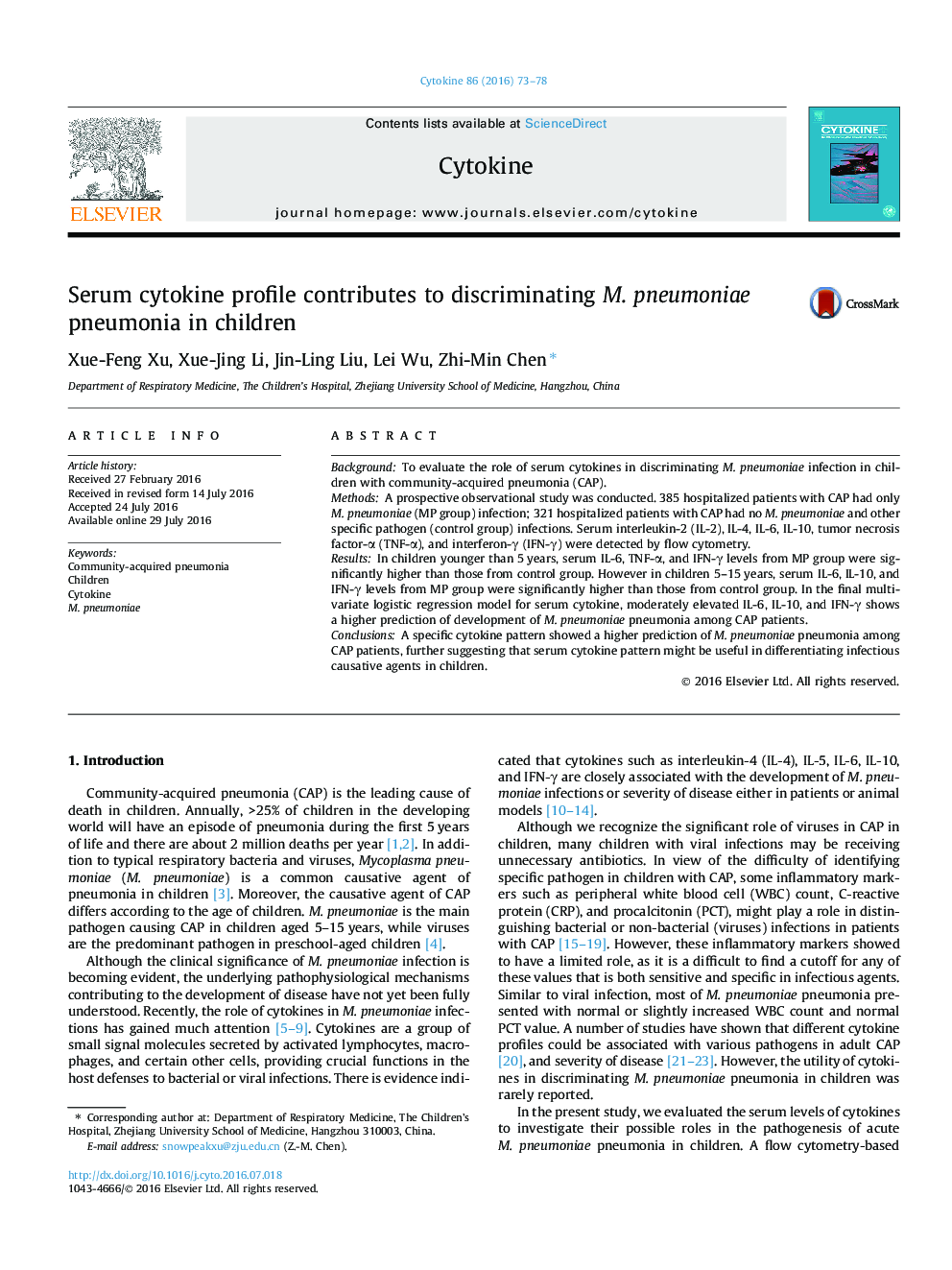| Article ID | Journal | Published Year | Pages | File Type |
|---|---|---|---|---|
| 2793767 | Cytokine | 2016 | 6 Pages |
•Cytokines are strongly correlated with the pathogenic mechanism of MP infections.•Serum IL-6, IL-10, and IFN-γ levels significantly increased in MP patients.•Elevated IL-6, IL-10, and IFN-γ could predict MP pneumonia among CAP patients.•Specific cytokine pattern contributes to differentiating infectious causative agents.
BackgroundTo evaluate the role of serum cytokines in discriminating M. pneumoniae infection in children with community-acquired pneumonia (CAP).MethodsA prospective observational study was conducted. 385 hospitalized patients with CAP had only M. pneumoniae (MP group) infection; 321 hospitalized patients with CAP had no M. pneumoniae and other specific pathogen (control group) infections. Serum interleukin-2 (IL-2), IL-4, IL-6, IL-10, tumor necrosis factor-α (TNF-α), and interferon-γ (IFN-γ) were detected by flow cytometry.ResultsIn children younger than 5 years, serum IL-6, TNF-α, and IFN-γ levels from MP group were significantly higher than those from control group. However in children 5–15 years, serum IL-6, IL-10, and IFN-γ levels from MP group were significantly higher than those from control group. In the final multivariate logistic regression model for serum cytokine, moderately elevated IL-6, IL-10, and IFN-γ shows a higher prediction of development of M. pneumoniae pneumonia among CAP patients.ConclusionsA specific cytokine pattern showed a higher prediction of M. pneumoniae pneumonia among CAP patients, further suggesting that serum cytokine pattern might be useful in differentiating infectious causative agents in children.
